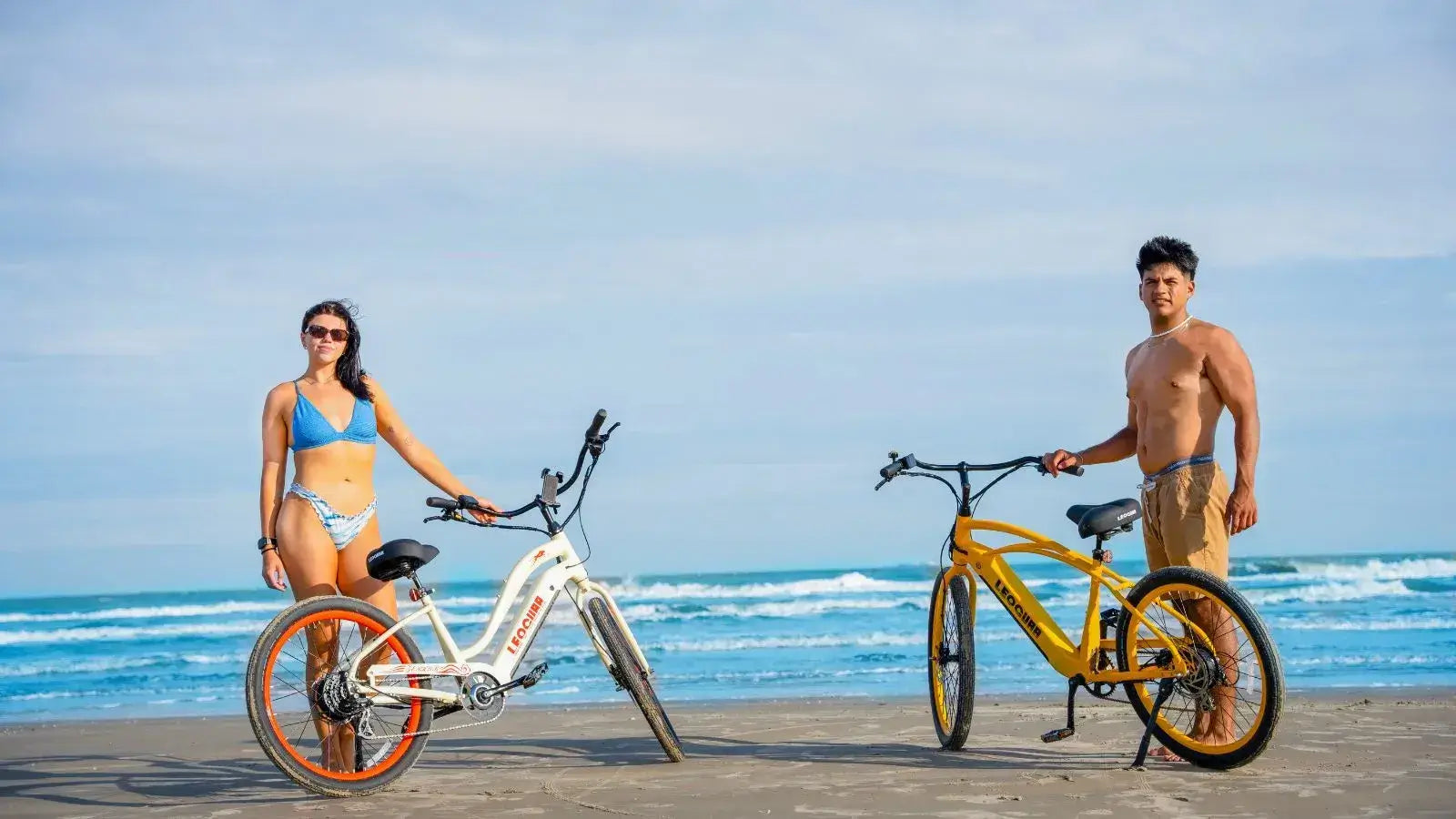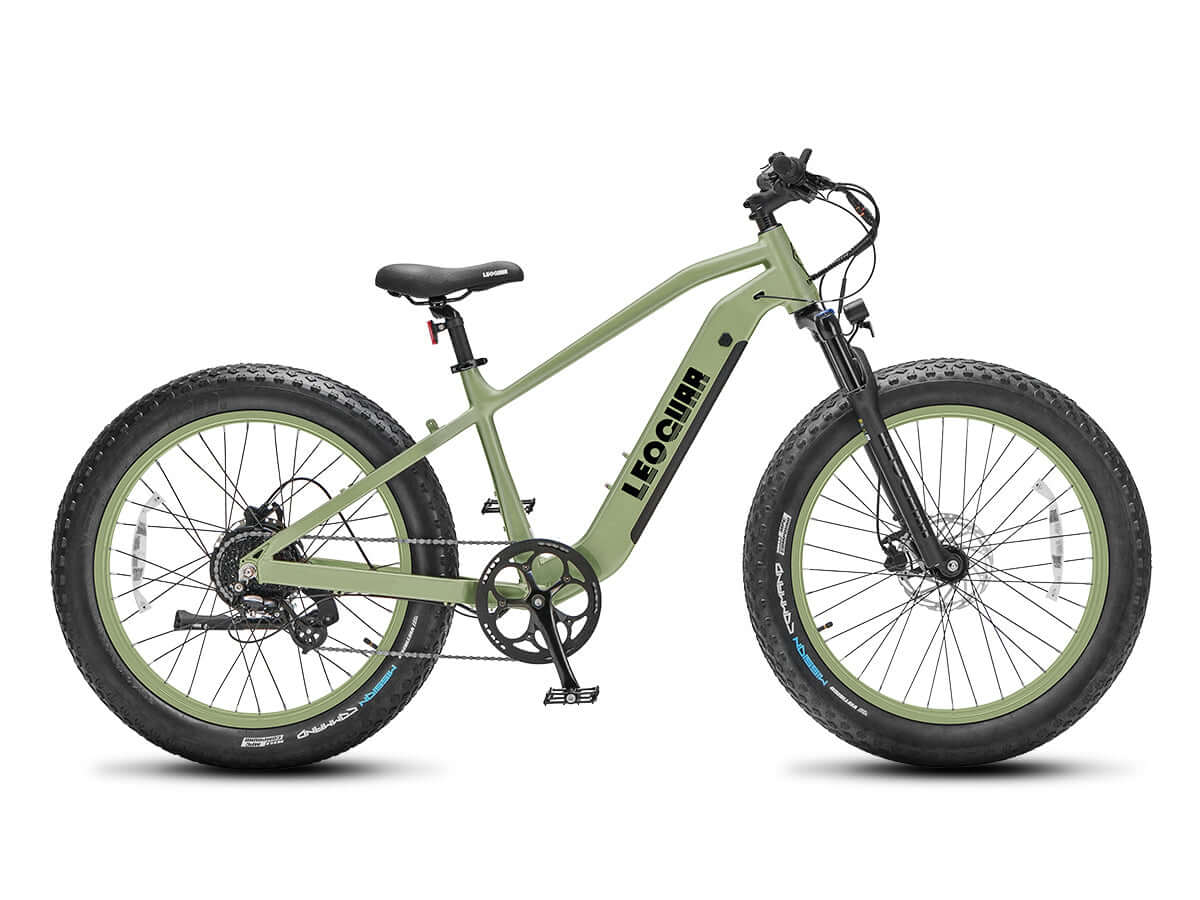
Electric Cruiser Bike vs Electric Moped: Which Is Better for Casual Riders?
Quick Answer: For most casual riders, an electric cruiser bike is the better choice—it enhances the joy of pedaling without removing the rider from the experience. It’s great for relaxed riding, gentle exercise, and scenic routes. An electric moped, on the other hand, suits those who want effortless motor-powered transport. The best pick depends on how you ride and what you're riding for.
Electric Cruiser Bike vs Moped: Quick Comparison at a Glance
To understand the basic differences quickly, this table shows the key features of each vehicle.
| Feature | Electric Cruiser Bike | Electric Moped |
|---|---|---|
| Primary Power Source | Pedal-assist with optional throttle | Throttle-only |
| Riding Experience | Active, engaged, and provides exercise | Passive, effortless, and pure transport |
| Fitness Benefit | Yes (low-to-moderate, scalable) | No |
| Typical Top Speed | 20-28 mph (Class 1-3) | 20-30+ mph |
| Legal Requirements | Generally treated as a bicycle | Often requires license, registration, insurance |
| Infrastructure Use | Bike lanes, multi-use paths, roads | Public roads only |
| Upfront Cost | Moderate to High | Moderate to High |
| Maintenance | Standard bicycle care + battery health | More complex, may need a specialized mechanic |
What Is an Electric Cruiser Bike—and What Counts as a Moped?
Beyond the specs, each vehicle has a different personality. Understanding this "vibe" is important to choosing the right one for you.
The Amplified Ride
An electric cruiser bike is, first and foremost, a bicycle. It takes the beloved design of a classic beach cruiser—with its relaxed, upright riding posture, comfortable saddle, and stylish frame—and adds an electric motor. This motor doesn't replace your effort; it makes it stronger. The core of the experience is pedal-assist, where the motor gives you a boost as you pedal, making you feel stronger and more capable.
Key features like wide, swept-back handlebars and large, shock-absorbing balloon tires focus on comfort over aggressive performance. The joy is still in the act of riding, just with less sweat and strain. This makes it the best electric beach cruiser for those who still want to feel connected to the act of cycling.
The Nimble Scooter
An electric moped is a lightweight, scooter-style vehicle powered entirely by an electric motor and a throttle. There are no pedals; you simply twist the throttle to go. The design reflects this focus on pure utility, often featuring a step-through frame and a flat platform for your feet.
It's built for easy travel across town. While it's much quieter and lighter than a gas-powered scooter, its function is the same: to provide simple, motorized transportation. It sits between a bicycle and a full motorcycle, offering more speed than a bike but with less rules than a larger scooter.
Electric Cruiser Bike vs Moped: Comfort, Speed, and Cost Compared
Now, let's dive into the details that will truly shape your ownership experience, from physical effort to legal requirements.
Effort and Fitness
This is the most basic difference. Do you want to move your body, or do you want your vehicle to do all the work?
An electric cruiser bike offers exercise that you can control. With different pedal assist levels, you are in complete control of your workout. On a low setting, you'll get a light workout similar to a brisk walk, perfect for easy exercise or just enjoying the scenery.
Turn it up to a higher level to beat steep hills without exhausting yourself. You can even turn the assistance off entirely for a traditional cycling experience. It keeps you active and engaged.
An electric moped requires zero physical effort. The ride is entirely passive. You sit, twist the throttle, and the motor handles everything else.
This makes it a pure transportation tool. It's ideal for getting to work without breaking a sweat or for running errands when you just need to get there. It is not, however, a form of exercise.
Speed, Power, and Access
Where you can ride is just as important as how fast you can go. The laws governing these two vehicles create very different boundaries.
Electric cruiser bikes fall under the standard ebike classification system in most areas.
* Class 1: Pedal-assist only, with a top assisted speed of 20 mph.
* Class 2: Throttle-equipped, with a top assisted speed of 20 mph.
* Class 3: Pedal-assist only, with a top assisted speed of 28 mph.
This classification is critical because it determines where you can ride. Class 1 and 2 e-bikes are generally allowed on the same bike lanes, multi-use paths, and trails as traditional bicycles. Class 3 bikes are often restricted to bike lanes on roads and public roadways.
Electric mopeds, regardless of their top speed, are almost always restricted to public roads. Even if its top speed is only 25 mph, you cannot legally ride it in a bike lane or on a park trail. Their power is delivered instantly via the throttle, which makes them feel quick off the line and able to keep up with city traffic.
Laws and Paperwork
This is a critical, often-overlooked factor that can significantly impact the ease and cost of ownership.
For an electric cruiser bike (specifically Class 1 and 2), the legal requirements are minimal. In most places, they are treated just like standard bicycles. This means no driver's license, no vehicle registration, no license plate, and no mandatory insurance.
It's a grab-and-go experience. While it's always wise to check local rules, laws are becoming more standardized. Currently, over 40 states have adopted the 3-class e-bike definition, creating a predictable legal framework.
You can see how ebike laws vary by state to check your local rules.
An electric moped is a different story. Most states classify it as a motor vehicle. This typically means you will need:
* A valid driver's license (sometimes with a specific motorcycle or moped endorsement).
* Vehicle registration with the DMV.
* A physical license plate displayed on the vehicle.
* Mandatory liability insurance.
These requirements add layers of complexity and ongoing costs that simply don't exist with an electric cruiser bike.
Total Cost of Ownership
The sticker price is only the beginning. The long-term costs associated with each vehicle can be quite different.
-
Upfront Cost: The initial purchase price for both an entry-level electric cruiser bike and an electric moped can be surprisingly similar, typically starting around $1,500 and going up from there.
-
Ongoing Costs (Electric Cruiser Bike): Maintenance is very similar to a standard bicycle. You'll have regular tune-ups for brakes and the chain, and you'll eventually need to replace the battery. A quality battery lasts 3-5 years and costs between $400 and $800 to replace.
There are no annual fees for registration or insurance.
- Ongoing Costs (Electric Moped): This is where the costs diverge. You will have annual fees for vehicle registration and mandatory insurance, which can add a few hundred dollars or more to your budget each year. Maintenance can be more complex, potentially requiring a mechanic who specializes in electric scooters.
Battery replacement costs are similar to e-bikes, but the addition of recurring administrative fees makes the total cost of ownership significantly higher.
Which One Feels Better? Real-World Ride Test
Specs and laws are one thing, but the actual feeling of riding is what truly matters. We've spent countless hours on both to give you a sense of the experience.
Cruising the Boardwalk
Riding an electric cruiser bike along a path is a sensory experience. The moment you push on the pedals, you feel a gentle, satisfying push from the motor. It's not a jolt; it's a smooth surge of power that makes you feel like you have superhuman legs.
The quiet whir of the hub motor is barely audible, blending in with the sound of the wind and birds. You can still hold a conversation with a friend riding a non-electric bike next to you. The upright, relaxed posture, a hallmark of the cruiser design, lets you sit back and take in the scenery without any strain on your back or wrists.
It feels like cycling, just easier and more joyful.
Zipping to the Cafe
Hopping on an electric moped for an urban errand feels efficient and purposeful. At a stoplight, a simple twist of the wrist delivers instant, silent acceleration, getting you ahead of traffic flow. There's no concern for hills or headwinds; your speed is consistent and effortless.
You feel like a part of the traffic, occupying your lane with confidence. You arrive at your destination completely fresh, with no sweat. However, this experience creates a different presence on the road.
You are a small motor vehicle, and you must act like one, which means forgoing the freedom of a bike path for the structure of the street.

Electric Cruiser Bike vs Electric Moped: Which One is Better for You?
So, which two-wheeled electric ride is in your future? The choice comes down to your primary goal: recreation or transportation.
Choose the Electric Cruiser Bike if:
* You want to enjoy the feeling of cycling and get gentle exercise.
* You plan to ride on scenic bike paths, park trails, and boardwalks.
* You value simplicity and want to avoid the hassle of registration and insurance.
* Your ideal ride is a relaxed, comfortable journey, making it the best electric beach cruiser experience.
Choose the Electric Moped if:
* Your main goal is purely effortless, sweat-free transportation.
* You will be riding exclusively on streets alongside other cars and trucks.
* You are comfortable with the legal requirements of a motor vehicle, including a license, registration, and insurance.
* You need to keep pace with city traffic for short, utilitarian commutes.
Frequently Asked Questions
1. Q: Do I need a license to ride an electric cruiser bike?
A: In most places, no license is required for Class 1 and 2 electric cruiser bikes. They are treated like regular bicycles under the law. However, always check your local regulations as laws can vary by state and municipality.
2. Q: How far can I ride on a single charge with an electric cruiser bike?
A: Most electric cruiser bikes can travel 20-50 miles on a single charge, depending on the battery size, your weight, terrain, and how much pedal assistance you use. Using lower assist levels will extend your range significantly.
3. Q: Can I ride an electric moped in bike lanes?
A: No, electric mopeds are generally prohibited from bike lanes, bike paths, and trails. They must be ridden on public roads like other motor vehicles, even if their top speed is similar to an e-bike.
4. Q: What happens if my electric cruiser bike battery dies while I're riding?
A: You can still ride it like a regular bicycle by pedaling. Electric cruiser bikes are designed to be rideable without motor assistance, though they may feel heavier than a traditional bike due to the motor and battery weight.
5. Q: Which is more expensive to maintain long-term, an electric cruiser bike or electric moped?
A: Electric mopeds typically cost more to maintain due to annual registration fees, mandatory insurance, and potentially more complex repairs. Electric cruiser bikes have maintenance costs similar to regular bicycles, with the main additional expense being battery replacement every 3-5 years.









































Leave a comment